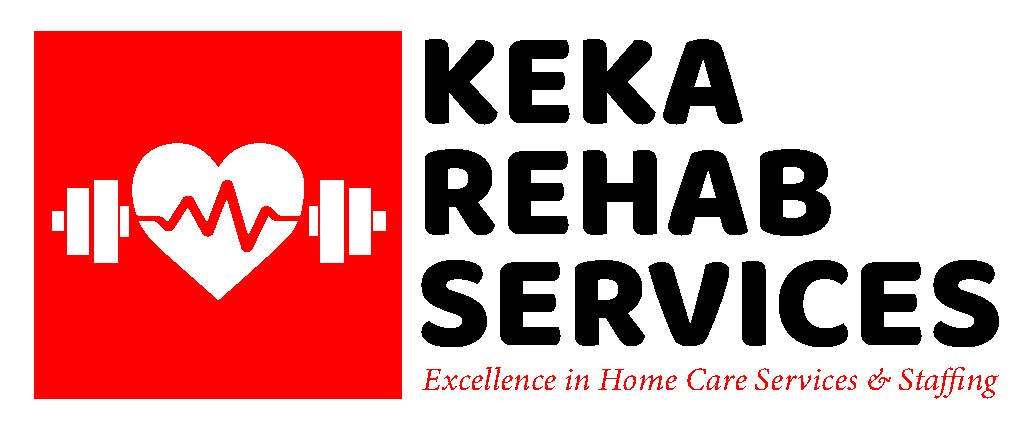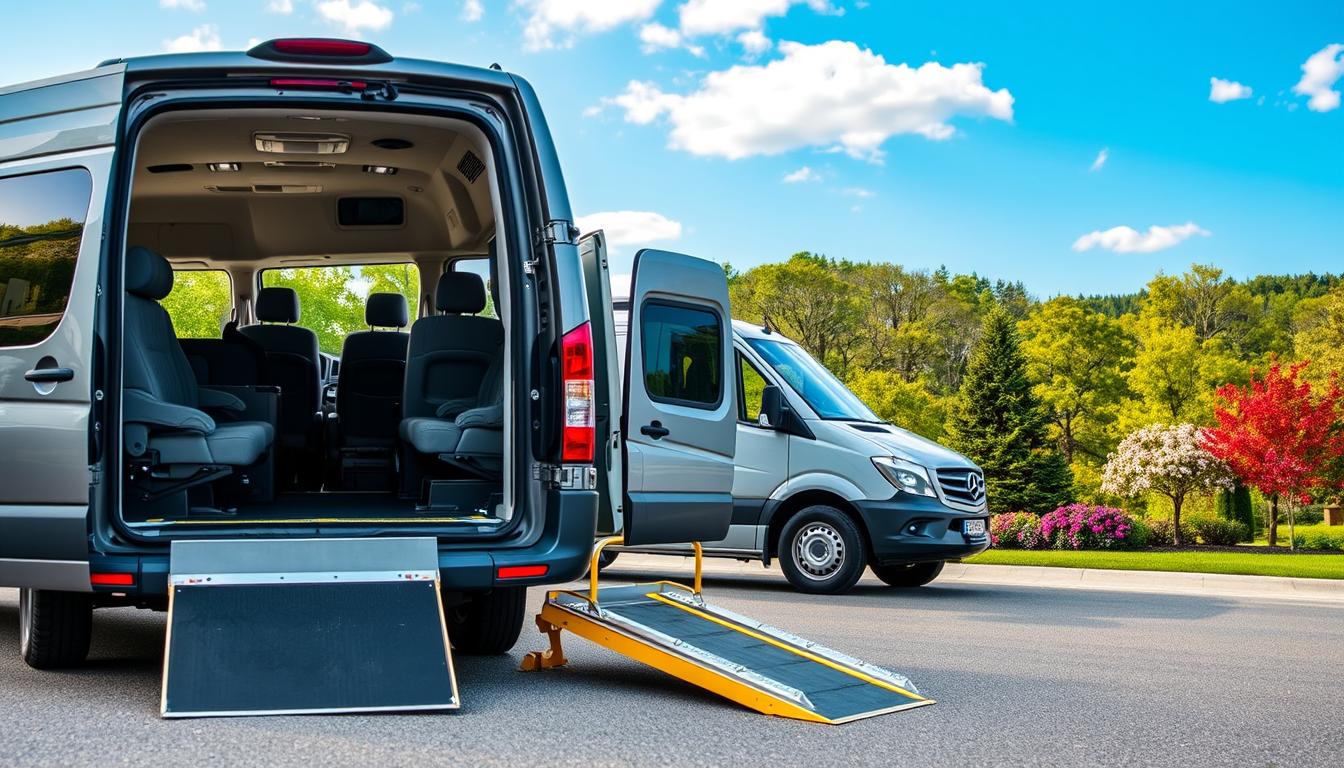Did you know that 90% of seniors want to stay in their homes as they age? Yet, 21% of Americans aged 65 and older don’t drive, which creates a big challenge for getting around. This shows how vital senior transportation services are for keeping seniors independent and happy.
The U.S. is getting older, and so is the need for help getting around. Senior ride services are essential, linking older people to healthcare, social events, and everyday needs. These services are changing how we care for our elderly.
Key Takeaways
- Senior transportation services are vital for maintaining independence
- Various options exist, from public transit to specialized services
- Local and national programs cater to different needs and budgets
- Medicaid often covers non-emergency medical transportation
- Volunteer programs and community services supplement formal options
Understanding the Importance of Senior Transportation Services
Senior transportation services are crucial to keeping older adults independent and happy. With more Americans ageing, the need for these services is growing fast. Many seniors want to stay in their homes. So, they need reliable transport for everyday tasks and to stay connected with others.
Public transport, such as buses, trains, and subways, has fixed routes and times. It’s often cheaper than owning a car or using taxis, with discounts for seniors. Paratransit offers door-to-door transport in special vehicles with skilled drivers for those who have trouble moving around.
Assisted living places know how crucial transport is. They offer shuttle services and private rides and work with local transport to help residents go to doctor’s visits, shop, and attend social events. These services boost senior mobility and keep them feeling independent.
Senior travel help does more than make life easier. It helps seniors stay social, fight loneliness, and stay healthy. Most caregivers help their loved ones with rides, showing how essential these services are. New solutions like ride-sharing apps for seniors are coming up to offer more flexible and easy transport options.
Types of Senior Transportation Options
Senior ride services offer many choices to fit different needs and likes. From buses and trains to special services, there’s something for everyone.
Public Transportation
Cities have buses and trains for seniors, and they often get discounts, making it cheaper. In New York City, seniors pay just $1.45 for subway rides, less than half the regular fare.
Para-transit Services
Para-transit uses small vehicles for seniors and those who have trouble moving around. It’s made for comfort and easy access and offers door-to-door service. For many, it’s a pivotal way to get around, as over half of Americans over 65 can’t use public transport.
https://www.youtube.com/watch?v=VuAzq7p_XoI
Private Ride Services
Private companies focus on seniors. These services might cost more, but they offer personal care. In Seattle, the average cost is $25.86 per hour, while in San Antonio, it’s $16.83. Some even help seniors from their homes to where they need to go.
Ride-Hailing Services
Apps like Uber and Lyft are popular with seniors. They offer rides on demand at about $1-$2 per mile. But, they might not always meet senior-specific needs.
Taxis
Taxis are a dependable choice for seniors. They’re easy to find and don’t need a smartphone. But, they can be expensive for regular trips.
Choosing the proper transport depends on your health, budget, and where you live. Some places have volunteer drivers or cheap community services. It’s wise to look at all options to find what works best.
Door-to-Door and Door-Through-Door Services
Door-to-door transportation services are a big help for seniors who can’t use regular buses or ride-sharing. They ensure seniors get from their homes to where they need to go and back safely.
Door-through-door services go even further. They help seniors get out of their homes, into the car, and to their final destination. This is especially important for seniors who can’t move easily or are bedridden.
Companion driving services often include:
- Help with carrying bags
- Assistance with loading wheelchairs
- Support during appointments or social outings
These services are excellent for seniors who have trouble moving around. They make trips more accessible and less stressful. Many cars can even take motorized wheelchairs, ensuring everyone can get where they need to go.
Public transport is cheap for healthy seniors, but door-to-door and door-through-door services are essential for those needing more help. The cost depends on the senior’s needs and the help they require.
Choosing door-to-door or door-through-door transport lets seniors stay independent and get to important places with dignity and comfort.
Non-Emergency Medical Transportation (NEMT) for Seniors
Non-emergency medical transportation helps seniors get to medical appointments. It’s key for older adults to get the healthcare they need without using emergency services.
Benefits of NEMT
NEMT offers safe rides to seniors for doctor visits, dental care, and therapy. It’s a big help for those on Medicaid, including low-income folks, pregnant women, and people with disabilities—even those who pay privately use NEMT when Medicaid doesn’t cover it.
Eligibility and Coverage
NEMT is often in Medicaid plans, and users get help with costs. Prices change based on the type of transport, where you are, and your needs. Some places give taxi vouchers to seniors and disabled people to make getting around easier.
Scheduling NEMT Services
You must book NEMT at least 24 hours ahead. Different types of transport are available, such as walking, wheelchair, and stretcher services10. Drivers know CPR and basic medical help, so you’re safe on the way.
Senior Transportation Services in Communities
Many senior living communities offer great transportation services. These services are part of the monthly fees. They give residents rides to places they need to go, making sure seniors can get to important places easily without worrying about driving.
Senior travel assistance covers many things, like:
- Medical appointments
- Shopping centres
- Social outings
- Community events
In Florida, seniors in specific programs like Alzheimer’s Disease Initiative or Community Care for the Elderly get help with transportation. This helps them stay independent and keep up with friends.
Community transportation is handy but might not offer one-on-one help during trips. Seniors should talk to their community’s staff about available services and when.
If you’re looking for more choices, the Find a Ride Florida program lists transportation services in all 67 Florida counties. This can help you find other ways to get around or add to what your community offers.
Volunteer Driver Programs for Elderly Care
Volunteer driver programs are essential for senior ride services. They offer free or low-cost rides for older adults who can’t drive or use public transit. Let’s look into how these programs work and where to find them.
How Volunteer Programs Work
Volunteer driving services let community members drive seniors around. Drivers must be 21 or older, have a clean driving record, and finish training. Some programs also offer CPR training, defensive driving classes, and help with passenger safety.

These services often transport seniors to and from their homes. This can be for doctor’s visits, grocery shopping, or social events. Drivers get paid for their miles and have extra insurance.
Finding Volunteer Driver Programs in Your Area
To find volunteer driver programs near you, start with local senior centres or Area Agencies on Aging. About 60% of these programs give free rides, mostly in cities. On average, there are 3.5 senior transport programs per county.
You must be 60 or older and live in the area to join. Some programs help people with disabilities, too. If you do pay, it’s usually just a little bit. For example, one program charges $3 one-way in the county.
These volunteer programs help older adults stay independent. They ensure seniors can reach important places and stay in touch with their communities.
Accessibility Features in Senior Transportation
Senior transportation services are changing to help older adults and those with mobility issues. Many public buses now have wheelchair lifts, making them easier for seniors.
About 25% of Americans aged 65 and older live in rural areas. These areas have a 15.3% disability rate, higher than in cities. This shows how vital accessible transportation is for seniors in these places.
Para-transit services use vans for wheelchair access. These vans have ramps or lifts for seniors with mobility aids. Some private ride services even offer vehicles for those with complex medical needs.
Ride-hailing companies like Uber and Lyft also help with accessible transport. They offer services for seniors and people with disabilities, including wheelchair-accessible vehicles and drivers who can help with special needs.
In Contra Costa County, the LIFE Ticket Program gives low-income paratransit users 10 one-way trip tickets a month worth $30. This shows how local efforts make transport more accessible and affordable for seniors.
As elderly mobility solutions improve, it’s key for seniors and their caregivers to know about the options in their area. These improvements help seniors maintain their independence and quality of life, even with mobility issues.
Cost Considerations for Elderly Transportation Services
Looking into senior transportation services means looking at the costs. There are many options, each with different prices and benefits for elderly care.
Insurance Coverage and Subsidies
Many programs help with the cost of transportation. Public para-transit services usually charge twice the bus fare. For example, a bus ride costs $2, so para-transit is $4. Some places offer cheaper options. The Ride in Kane program costs $5 for a one-way trip within 10 miles, and it’s available all day.
Private Pay Options
Private services for seniors are pricier but offer more choices. Prices range from $20 to $40 per ride. For example, Kendall Area Transit provides door-to-door service for $5, with a $1 discount for seniors. Some groups, like Independent Transportation Network America, have annual fees of $50 to $8018.
Comparing Costs Across Services
Volunteer driver programs are budget-friendly, often free or cost $5 to $10 per ride. On the other hand, specialized medical transport like Kendall Area Transit’s Medivan is $6 one-way for seniors. Public transit often gives discounts to seniors 65 and older. When picking your transport, think about more than just cost, like convenience and what you need.
Safety and Comfort in Senior Transportation
Senior ride services prioritize safety and comfort for elderly passengers. Charter buses provide a smooth ride with well-kept vehicles and skilled drivers20. They also make getting on easy, offering wheelchair-friendly buses for different mobility needs.
These services do more than take people’s places. They offer scenic tours and shuttles for fun events, improving seniors‘ social lives20. This helps seniors stay independent and attend social events, community gatherings, and family outings.
- Background checks on drivers
- GPS systems in vehicles
- Regular vehicle maintenance
- Accessible design for easy boarding
Comfort is vital in senior ride services. Many offer flexible, tailored options to meet individual needs and likes. It’s common for family members to join their loved ones, making trips more fun for everyone.
Choosing trustworthy senior transportation helps elderly people stay independent and get regular medical care. This is good for seniors and lowers stress for families, knowing their loved ones have safe and reliable transport.
Conclusion: Choosing the Right Senior Transportation Service
Keka Senior Transportation Services is vital to keeping seniors independent and happy contact us Today. Public transport is affordable and has features just for seniors, helping them stay connected with their community. Ridesharing services are easy to use and cover many areas, but they might be hard for those who don’t know how to use smartphones.
Non-emergency medical transport is for trips to doctor’s appointments and therapy sessions. Non-profits and government programs offer trustworthy transport options for older adults. Senior taxis and car services focus on comfort and making it easy for seniors to get around.
When picking a senior transport service, consider how easy it is to use, the cost, where it picks up, and how much help you need. Also, look into the company’s experience, how clean the cars are, and how they check their drivers. By looking at these things, you can find a service that fits your needs, ensuring seniors get safe and reliable rides.



